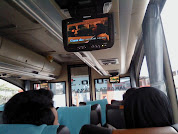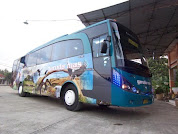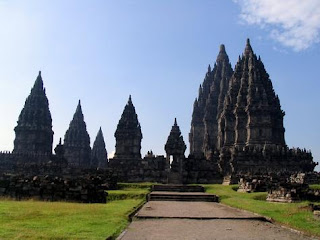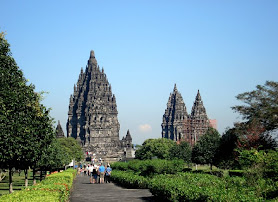Malioboro, Nostalgia in Souvenirs Paradise
Stretching on imaginary poles connecting Yogyakarta Sultan Palace, Tugu and the peak of Merapi Mountain, this street forms trading locality after Sri Sultan Hamengku Buwono I developed means of trading through traditional market since 1758. After 248 years, the place still persists as a trading area; it even becomes the icon of Yogyakarta, known as Malioboro.Located around 800 meters from Yogyakarta Sultan Palace, this place was always crowded with flowers each time the Palace held ceremonies. Malioboro that in Sanskrit means bouquet serves as a basis for naming this street.
Framed by shops, offices, restaurants, star hotels and historical buildings, the street that once functioned as struggling center during the second Dutch military aggression in 1948 was once a place of wandering for the artists joining together in Persada Studi Klub (PSK) community led by Umbul Landu Paranggi since 1970s to around the end of 1990s.
 Souvenirs Paradise
Souvenirs Paradise
Enjoying shopping experience, hunting exclusive souvenirs of Jogja, tourists may walk on foot along the arcades of Malioboro Street. There are many vendors selling their merchandises, ranging from such local handicrafts as batik, rattan ornament, leather puppet, bamboo handicrafts (key holder, ornament lamp, and others) as well as blangkon (Javanese / Jogjanese traditional cap) and silver goods to general little things that you may find in other trading places. Along the arcade, tourists will not only enjoy shopping peacefully on sunny or rainy days but they also enjoy bargaining prices. If they are good at bargaining and have good luck, they will end up buying at third quarter or even half of the prices offered.Do not forget to save energy. There is still one big traditional market tourists must visit. Well known as Pasar Beringharjo, this market provides complete traditional products in addition to similar goods sold along the arcade of Malioboro Street. In addition to local products of Jogja, products from neighboring areas such as Pekalongan batik and Solo batik are available. There are many choices of hand made batik, printed batik, window curtain with unique motifs and batik bed sheet. This place will satisfy the desire of buying unique goods at reasonable price.
Please make sure that you are not cheated by the offered prices. Usually, the vendors will increase the prices for tourists.
Vredeburg Fort and Gedung Agung
At the end of this "bouquet" street, tourists can drop by at Vredeburg Fort that is located across Gedung Agung. This fort was the Dutch protection basis from possible attacks by Yogyakarta Kingdom troops. Similar to other forts, this place built in 1765 is high, square walls confining the area inside with one monitoring tower in each of the four corners for patrolling purpose. From the tower at the southern part, YogYES took the opportunity to enjoy sceneries of the Sultan Palace and other historical buildings.Malioboro Cross-Legged Food Vendors (Lesehan, Javanese Language)
When the sun sets in the west and at the same time the lights along the street and the arcade add more beauty to Malioboro, food sellers begin to set the cross-legged eating place. Special menu of Jogja such as Gudeg and Pecel Lele are served in addition to oriental cuisines and sea food as well as Padang cuisine of West Sumatra. The street singers will sing hit songs and memory songs for some small change.For tourists who are going to try menus served along Malioboro Street, please do not hesitate to check the price list and confirm it to the seller to prevent illogical charge.
Visiting Yogyakarta, the city known as "The Javanese Culture Living Museum" will not be complete unless you pay a visit to the street that keeps various stories of Indonesian Nation struggle and crowded with various souvenirs. It is paradise for history lovers and souvenirs hunters.
call now:
Jogja Tour 085643 859676email kojiro_hida@yahoo.com













